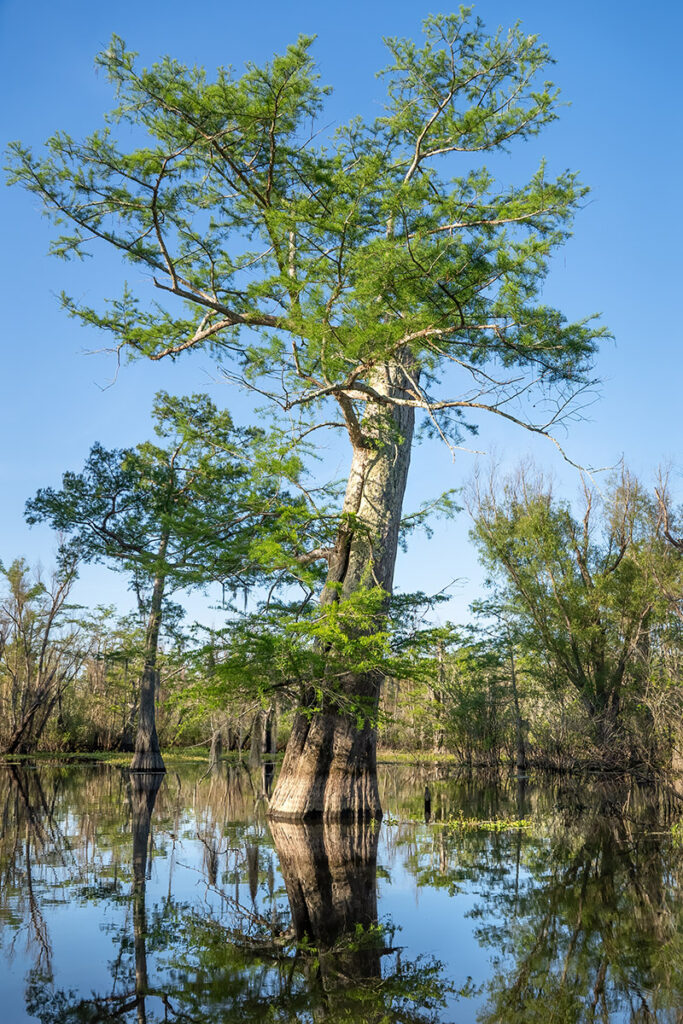The Atchafalaya Swamp, an expansive and intricate wilderness nestled in the heart of Louisiana, is a critical floodway for the Mississippi River, and has seen impacts from the timber and oil industries. Despite these challenges, it still stands as an amazing testament to the resiliency of nature.

a million acres of swamp
This swamp isn’t just any ordinary swamp; it’s the largest river swamp in the United States. Bryan Piazza of The Nature Conservancy marvels at the vastness, saying, “When you go to the Grand Canyon, it says The Grand Canyon is a million acres. And we’re sitting right now in a million acres of unbroken wetlands in the middle of the United States.” This wilderness is teeming with 300 species of wildlife and is a significant contributor to the wild-caught crawfish industry.
the atchafalaya swamp on tv
a century of change in the atchafalaya swamp
Historically, the Atchafalaya Swamp was a majestic forest of giant trees, now largely cut down due to the timber industry. Ecologist Joe Baustian of The Nature Conservancy reflects on this, saying, “We always wonder what it would’ve looked like when we had this majestic forest of large trees interspersed throughout this swamp and numerous species of birds that are now extinct flying through here.” Despite these challenges, the swamp remains a crucial flood control system for the Mississippi River.


man-made levees and canals
The Atchafalaya Swamp was turned into a floodway for the Mississippi River in the early 20th century. Large guide levees were built on either side of the swamp. Baustian explains, “that shrunk the size of the basin by about 50 percent”. The swamp has also been a target for oil and gas exploration, which led to numerous man-made canals. The spoil material from the dredging was often left along the canal banks. “That just changes the way that water flows internally in the system,” Baustian said.



restoring the atchafalaya swamp
The Nature Conservancy is actively working on restoration efforts within the Atchafalaya Swamp. By cutting notches in the banks of man-made canals, they hope to restore the natural flow of water. “When those cuts are made,” Baustian says, “then water’s able to flow through here just like it would have historically.”

atchafalaya conservation center

In addition to these efforts, The Nature Conservancy established a floating research facility on Little Tensas Bayou. The facility aids in more intensive research projects, an essential step towards stopping environmental decay and encouraging regrowth. Piazza explains, “This is a remote place and so if they have a place out here to stay, we can facilitate more intensive research projects.”





Duane Martin
Nice to know that conservation efforts are in place to preserve this beautiful area. I have plans to visit the Atchafalaya swamp this July. I love the peace and tranquility of swamps and wetlands.